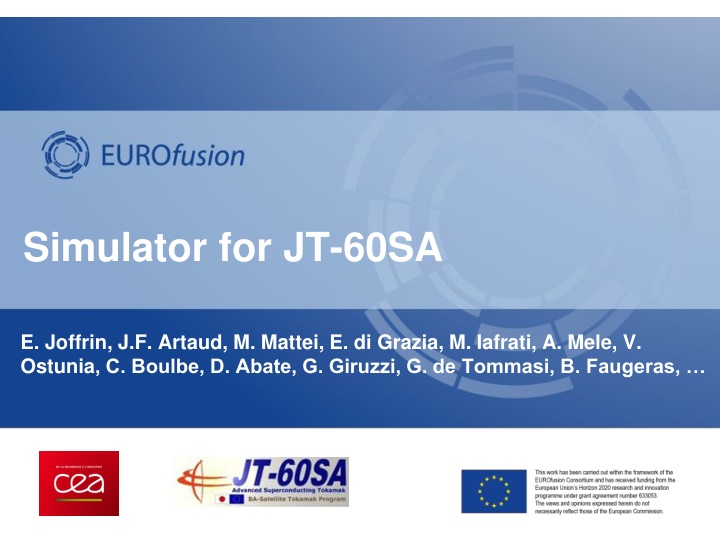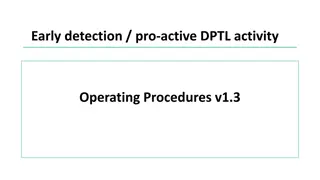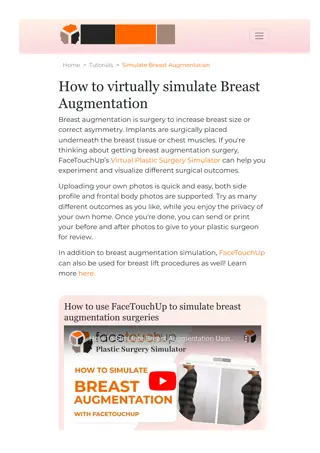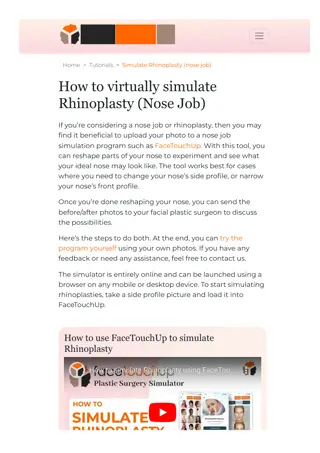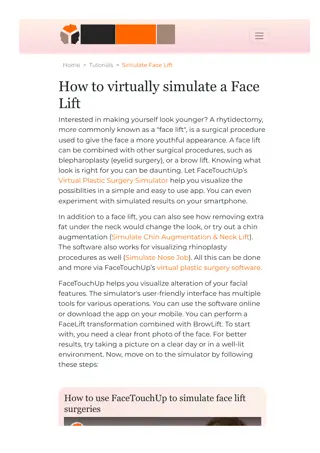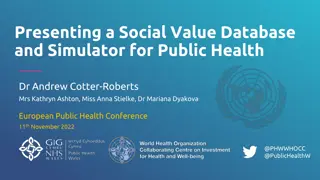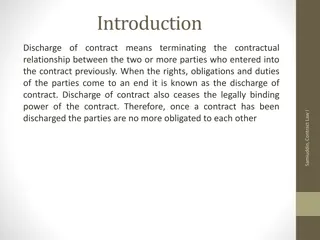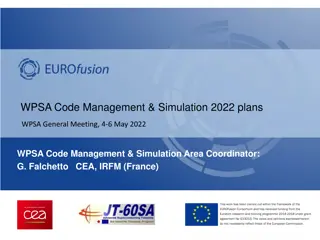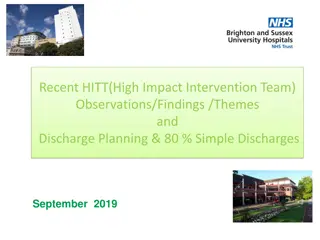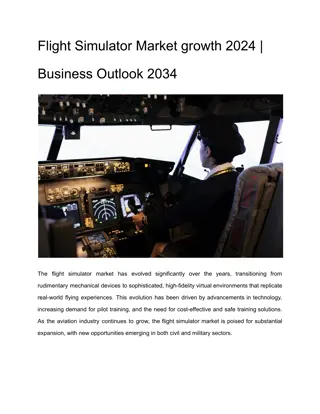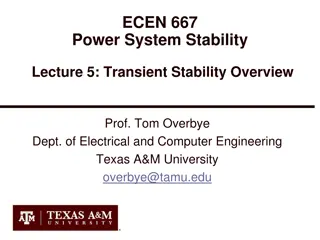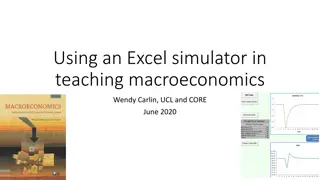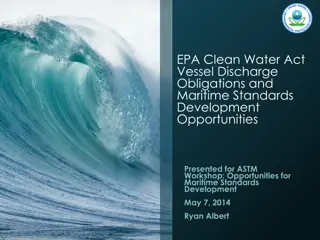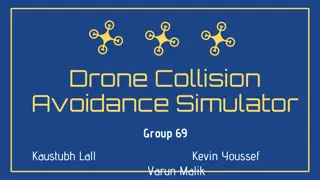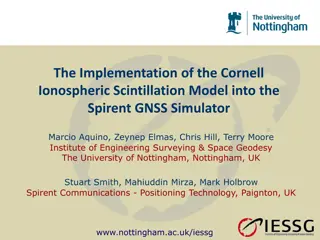Purpose of Discharge Simulator for JT-60SA
Tool developed in FP8 for EU scientists/operators to simulate plasma discharges on JT-60SA, optimizing experimental scenarios. The simulator allows for scenario optimization, coils/current feedforwards, shape updates, and more. It provides a friendly interface and replicates plasma confinement using METIS. However, it does not focus on transport descriptions or high-fidelity plasma discharge simulations.
Download Presentation

Please find below an Image/Link to download the presentation.
The content on the website is provided AS IS for your information and personal use only. It may not be sold, licensed, or shared on other websites without obtaining consent from the author.If you encounter any issues during the download, it is possible that the publisher has removed the file from their server.
You are allowed to download the files provided on this website for personal or commercial use, subject to the condition that they are used lawfully. All files are the property of their respective owners.
The content on the website is provided AS IS for your information and personal use only. It may not be sold, licensed, or shared on other websites without obtaining consent from the author.
E N D
Presentation Transcript
Simulator for JT-60SA E. Joffrin, J.F. Artaud, M. Mattei, E. di Grazia, M. Iafrati, A. Mele, V. Ostunia, C. Boulbe, D. Abate, G. Giruzzi, G. de Tommasi, B. Faugeras,
Purpose of the discharge simulator Work started in 2018 in FP8 within the WPSA operation task after the JT-60SA controller was introduced in CREATE ( + CCS QST code). Objective of the simulator Tool for EU scientists or operators to develop their experimental/operation scenario before proposing or implementing an experiment on JT-60SA. Light tool: accessible and reasonable CPU time. Friendly interface Capable of simulating a discharge from begining start of ramp-up to end of ramp- down, including X-point formation, heating, etc Includes the machine operational constraints (current limits, controller, etc ) What the simulator does not do The simulator is not aiming at describing transport (like ASTRA; CRONOS, etc). It uses METIS for reproducing plasma confinement from 0D scalings. It is not a high fidelity simulator for plasma discharges (like TSVV11): does not contain disruption models or sophisticated edge or fast particle models for example. Operation Task FP8 E. JOFFRIN | 16 March. 2021 | PAGE 2
How to operate the simulator STEP 3 STEP 1 STEP 2 GUI GUI GUI Scenario optimisation Coils current feedforwards Shape update Plasma shapes Initial equilibrium Linearized model Plasma scenario development PLASHAPE CREATE- EGENE METIS FEEQS.M (FBE inverse mode) 1stequilibrium Linearized model METIS Simulink Shape controller Vertical controller Plasma current controller STEP 4 Coil current feedforwards Reference Waveforms (Ip, ) CREATE-NL (free boundary equilibrium) METIS simulator (plasma scenario) Operation Task FP8 E. JOFFRIN | 16 March. 2021 | PAGE 3
Step 1: Prepare plasma shape sequence CREATE-EGENE is a graphical user interface developed CREATE-L/NL codes It has been designed as a control oriented tool for magnetic equilibria generation Developed for JT-60SA and ITER and installed in Rokkasho for the Visualize the poloidal flux map internal profiles and SOL geometry Compare different plasma equilibria Compute adjustements to current equilibrium Optimize currents to obtain the desired shape Launch CREATE-L/NL to compute free boundary equilibria and generate linearized models for the plasma/circuits varaitions. Open linearized models in Simulink and build control schemes Note: existing shape sequence exemples in the PID Operation Task FP8 E. JOFFRIN | 16 March. 2021 | PAGE 4
Step 2: Run plasma secnario with METIS References Parameters Input from EGENE Scenario choice METIS : main interface Run (~ 1mn) Visualisation Export to database Results Operation Task FP8 E. JOFFRIN | 16 March. 2021 | PAGE 5
Step 3: Optimize the scenario FEEQS is a quasi-static free-boundary equilibrium code that computes the coils currents necessary to produce a given magnetic equilibrium. Inputs: P and FF profiles from METIS; Plasma shape from METIS; Plasma current; LCFS poloidal flux; Coils limits. Outputs: Updated LCFS shape as real solution of free-boundary equilibrium equation; Waveforms of time dependent coil currents; Forces and maximum magnetic field on coils; Estimation of voltage on coils; Estimation of current in passive structures. Operation Task FP8 E. JOFFRIN | 16 March. 2021 | PAGE 6
STEP 4: Start the full coupling procedure between METIS and CREATE-NL with the JT-60SA controller. Time dependent simulations Simulink controller for transient phase study (ramp-up, ramp-down, X-point formation, L to H and H to L transition, perturbation mitigation, ) with CREATE-NL coupled to METIS with a Two possible modes: Weak coupling (faster and more stable but only ??, ??& ??exchanged) Strong coupling (slower and less stable: P and FF exchanged) SC2 current ramp-up Light coupling mode works, but strong coupling has divergence issues. Operation Task FP8 E. JOFFRIN | 16 March. 2021 | PAGE 7
Deployment of the codes on the gateway for users Since the end of 2018, the update of the gateway with the adequate matlab software is suspended due to contractual issues. Last email from R. Kamendje: We have just been informed by ENEA that they are waiting for the greenlight from MathWoks to install the required licences. I was promised to receive an email as soon as this will be the case Next task: Deployment (downloading the codes METIS, EGENE, ) of the light coupling procedure on the gateway (0.1ppy). Edit the documentation and online video tutorial for using the codes of the simulators. (0.05ppy). Call for future users of the simulator: future SLs, experiment coordinators, etc Please sign the user agreement Later: train future SLs and scientific coordinator Operation Task FP8 E. JOFFRIN | 16 March. 2021 | PAGE 8
Development of test cases for the simulator Test cases to be developed for scenario 2 Case number Plateau Density in m-3 Type Specie Power NNB/PNB/ECH1/ECH2 Comments ECH1 starting just before the X-point until the end of Ip plateau. ECH2 starting at the time of the current plateau ECH1 starting just before the X-point until the end of Ip plateau. ECH2 starting at the time of the current plateau Beam power increased in 2 steps of 200ms Beam power increased in 2 steps of 200ms Beam power increased in 2 steps of 200ms 4.5e1019 1 Ohmic with ECRH H 0 / 0 / 1.5 / 1.5 4.5e1019 2 Ohmic with ECRH D 0 / 0 / 1.5 / 1.5 4.51019 4.51019 4.51019 3 4 4 Power Power Power D D 10 / 6 / 1.5 / 1.5 10 / 13.5 / 1.5 / 1.5 10 / 20 / 1.5 / 1.5 D & H Carry out the checks Existence of the H-mode and PLH versus PIN Beam shinethrough and first orbit losses For each case, compute FEEQS to check the flux consumption and current limits. Check the Ejima coefficient + do the same for scenario 4.2 Design an optimised current ramp with a new shape sequence for reduced flux consumption Existence of the H-mode Run CREATE EGENE for the new shape with reduced triangularity and elongation (slow ramp of the shape) taking care that the X-point can be made. Introduce the shape data into METIS and rerun the above cases in ohmic to check the gain in flux. Run the case with power to check the gain. 0.2ppy + 0.1ppy Operation Task FP8 E. JOFFRIN | 16 March. 2021 | PAGE 9
Convergence of strong coupling + CPU time Modify equation: new version of FEEQS and NICE without the boundary conditions (INRIA). use it with the new controller. Requires a modification of METIS+FEEQS. 0.2ppy. CREATE-NL-Metis coupling: test the validity of the proposed approach on non ohmic scenarios and work on controllers to get a more robust coupling. Modify the controller test the modification on different cases with different degree of betap variations. (Collaboration with Engineering controller with G deTommasi and A. Pironti) 0.1ppy Assess computing time for various configuration: 0.1ppy weak versus strong coupling, with or without eddy current, Operation Task FP8 E. JOFFRIN | 16 March. 2021 | PAGE 10
Related Publications Metis: a fast integrated tokamak modelling tool for scenario design, J.F. Artaud et al 2018 Nucl. Fusion 58 105001. Quasi-static free-boundary equilibrium of toroidal plasma with CEDRES++: Computational methods and applications, H. Heumann et al, J. Plasma Physics (2015), vol. 81, 905810301 , doi:10.1017/S0022377814001251. Equilibrium reconstruction at JET using Stokes model for polarimetry, Blaise Faugeras et al 2018 Nucl. Fusion 58 106032 . JT-60SA Research Plan, Research Objectives and Strategy, Version 3.3, 2016, March: JT-60SA Research Unit (http://www.jt60sa.org/pdfs/JT- 60SA_Res_Plan.pdf) https://idm.f4e.europa.eu/Portal/Pages/ContentView.aspx?uid=2AAZGM H. Urano et al, Fusion Engineering and Design 100 (2015) 345 356 T Wakatsuki et al, Plasma Phys. Control. Fusion 57 (2015) 065005 (12pp) V. Ostuni et al., Nuc. Fus. Vol 61, No2 Operation Task FP8 E. JOFFRIN | 16 March. 2021 | PAGE 11
